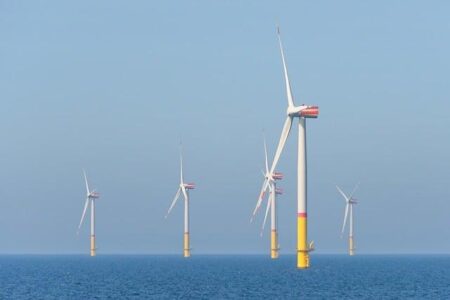Australia is grappling with an unprecedented environmental crisis as a massive algal bloom has already claimed the lives of more than 87,000 animals along its coastline. This devastating event, driven by a combination of climatic and ecological factors, has triggered alarm among scientists, conservationists, and local communities alike. With summer approaching, questions mount about the potential for the bloom to intensify, threatening marine biodiversity, fisheries, and the delicate balance of coastal ecosystems. This article examines the causes behind the catastrophe, the scale of its impact, and what experts warn could unfold in the critical months ahead.
Australia’s Algal Bloom Devastates Marine Life and Ecosystems
The recent surge in toxic algal blooms along the Australian coastline has resulted in an unprecedented marine die-off, with over 87,000 animals confirmed dead across affected regions. This blight has devastated not only fish populations but also endangered species, seabirds, and vital coral reefs, disrupting complex marine food webs and ecosystems. Scientists warn that the warmer ocean temperatures and nutrient runoffs from agricultural activities are fueling these blooms, which release harmful toxins into the water, suffocating marine life and causing widespread mortality.
Communities reliant on fishing and tourism are facing serious economic challenges as beaches are closed and fisheries shut down to prevent health risks. Officials and environmentalists emphasize the urgent need for improved water management and climate adaptation strategies to mitigate future outbreaks. The following table outlines the primary species affected and the estimated mortality rates reported since the bloom began:
| Species | Estimated Deaths | Impact Notes |
|---|---|---|
| Fish (various species) | 50,000+ | Mass die-offs, disrupted spawning |
| Seabirds | 15,000 | Poisoning from consuming contaminated fish |
| Marine mammals | 8,500 | Respiratory distress and stranding events |
| Coral reefs | Significant bleaching | Long-term ecosystem degradation |
Key concerns moving forward include:
- Potential escalation of blooms during the warmer summer months
- Ongoing threats to biodiversity and critical habitats
- Need for coordinated government and community response
Scientists Warn of Escalating Environmental and Economic Impacts
Experts highlight that the prolonged algal bloom crisis is triggering a cascade of environmental disruptions, affecting not only wildlife but entire ecosystems. The unprecedented quantity of marine life fatalities-surpassing 87,000-signals severe oxygen depletion in water bodies, which jeopardizes biodiversity and the resilience of aquatic habitats. Scientists warn that without swift intervention, the bloom’s toxic effects could spread to adjacent regions, compounding risks to fisheries, tourism, and coastal communities.
Economically, the consequences are mounting, with local industries already reporting significant losses. Key concerns include:
- Fisheries collapse: Reduced fish stocks threaten the livelihoods of thousands dependent on commercial and recreational fishing.
- Tourism downturn: Degraded water quality and dead wildlife discourage visitors, impacting coastal economies.
- Public health risks: Elevated toxin levels in seafood and water supplies raise safety alarms.
| Sector | Estimated Loss (AUD millions) | Projected Recovery Time |
|---|---|---|
| Fisheries | 50 | 2-3 Years |
| Tourism | 30 | 1 Year |
| Public Health | 10 | Ongoing Monitoring |
Urgent Calls for Enhanced Monitoring and Mitigation Strategies This Summer
The unprecedented scale of the recent algal bloom disaster demands immediate and amplified efforts to monitor water quality and marine ecosystems. Experts warn that without rigorous surveillance and proactive interventions, the devastating effects witnessed earlier this year could worsen as temperatures rise. Key strategies must include enhanced satellite imaging, increased sampling frequency across vulnerable coastal regions, and the deployment of real-time sensors to detect harmful algal species before outbreaks escalate. Collaboration between governmental bodies, local communities, and scientific organizations is essential to develop adaptive response plans tailored to regional ecosystems.
Mitigation efforts must prioritize both short-term relief and long-term resilience. Initiatives such as controlled nutrient runoff management, restoration of natural wetlands, and public awareness campaigns are crucial components of an effective response. Stakeholders should focus on:
- Reducing agricultural and urban pollution sources
- Enhancing marine biodiversity to strengthen ecological balance
- Implementing rapid wildlife rescue and rehabilitation protocols
Below is a simplified overview of recommended monitoring actions and their intended outcomes:
| Monitoring Action | Target Area | Expected Outcome |
|---|---|---|
| Satellite Water Quality Imaging | Coastal Waters | Early bloom detection |
| In-situ Chemical Sensors | Estuaries & Bays | Real-time toxin monitoring |
| Biological Sampling Programs | Marine Fauna Habitats | Assess ecosystem health |
Concluding Remarks
As Australia braces for the warmer months ahead, the devastating impact of this year’s algal bloom serves as a stark warning of the fragile balance within marine ecosystems. With over 87,000 animals already lost, experts urge swift action and ongoing research to mitigate future outbreaks. The coming summer will be a critical test of both environmental resilience and human response, as communities, scientists, and policymakers seek to safeguard the nation’s unique coastal biodiversity from further catastrophe.




